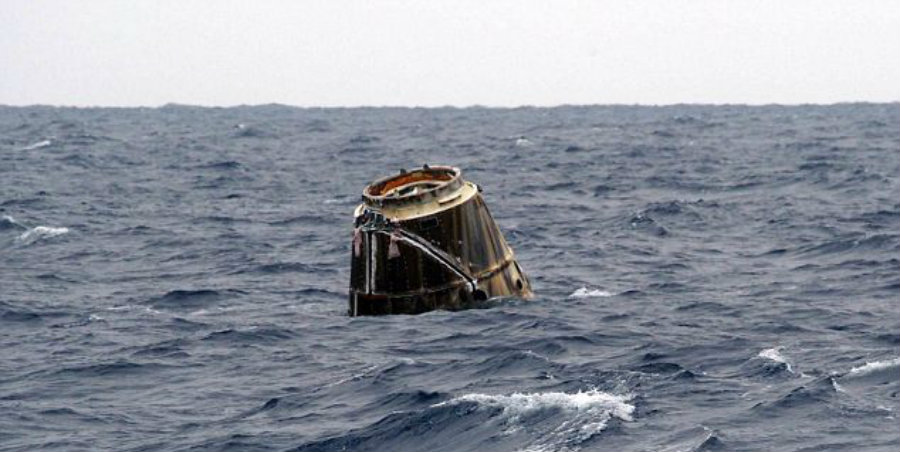SpaceX’s crewless Dragon Capsule successfully returned to Earth from the International Space Station on Friday with more than 3,000 lbs. of NASA science experiments. The spacecraft splashed down in the Pacific Ocean off of Baja California, Mexico, at 11:47 a.m. EDT after NASA’s Kate Rubins and Japanese astronaut Takuya Onishi used the station’s robotic arm to release it yesterday morning.
SpaceX employees retrieved the spacecraft, which was then taken by ship to a port near Los Angeles and some of the cargo, equipment, and research samples were removed to be sent to NASA. Twelve mice were that were kept on the station for 30 days were part of the science materials that were sent back to Earth.

Researchers will analyze the DNA from the animals’ organs to study the effects of microgravity on DNA expression, as reported by Space.com. The DNA of the spacefaring mice’s offspring will also be analyzed.
“Good splashdown of Dragon confirmed, carrying thousands of pounds of @NASA science and research cargo back from the @Space_Station,” SpaceX officials tweeted.
The Dragon space capsule arrived at the ISS July 20 also carrying tools and supplies for the space station crew. The spacecraft also delivered the first of two international docking adapters that will allow future spacecraft to dock directly with the U.S. segment of the ISS, according to the report by Space.com.
Kate Rubins and Expedition 48 Commander Jeff Williams spent the week preparing the Dragon space capsule for its return to Earth and on Sept. 1 will have another spacewalk. They have the task of retracting a thermal control radiator that is not operating, and they will then install a one HD camera onto the exterior of the space station. The task is important because by retracting the radiator they will help keep it safe from space debris and preserve it as a spare for the ISS, as NASA officials informed in a briefing.
The second American record in less than one year
Williams will return home Sept. 6 after breaking a new American record for most days in space. On Wednesday, Aug. 24, he became the first astronaut to surpass 520 days in space, a record that Scott Kelly had previously held. Russian cosmonauts Oleg Skripochka and Alexey Ovchinin will make their way back to Earth alongside Williams, who will have spent a total of more than 534 days off the planet by the Time he returns. Williams arrived at the space station on March 18.

“It is an honor to spend any day in space and certainly, to have accumulated that time is truly an honor for me,” expressed Williams in a NASA interview recorded last month.
The commander of the ISS’ Expedition 48 crew has accumulated four trips into orbit since he became an astronaut in 1996. A 10-day shuttle mission in 2000 marked Williams’ first spaceflight and served to deliver supplies to the burgeoning complex. In 2006 and 2010, he launched on two long-duration stays as an expedition crew member.
But Williams will hold the record for a short time, just like Kelly. Astronaut Peggy Whitson will most likely surpass his 534 total days during her launch in November. She has spent more than a year in orbit spread over the course of the two missions she has been part of. Whitson is expected to reach a total of 557 days by May 2017, and that record would rank her eighth among the world’s community of space explorers, according to Space.com.
Source: Space.com
